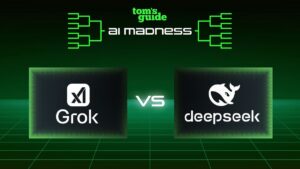Has DeepSeek Truly Reduced Compute Demand in 2025?

Understanding DeepSeek’s Impact on Compute Demand in 2025
The rapid advancement of technology has led to increasing concerns regarding compute demand—the amount of computational power required to perform a variety of tasks, ranging from everyday computing to complex data analysis. A significant player in addressing these concerns is DeepSeek, a technology whose implications for compute demand are under scrutiny as we approach 2025.
What is DeepSeek?
DeepSeek is an innovative computational framework designed to optimize algorithms and improve efficiency in various computing tasks. By leveraging advanced machine learning techniques and deep learning models, DeepSeek aims to streamline processes that typically require substantial computational resources. This could greatly benefit industries reliant on large-scale data handling, such as finance, healthcare, and artificial intelligence.
The Decline in Compute Demand
Factors Contributing to Lower Demand
Algorithm Optimization: DeepSeek utilizes refined algorithms that require less computational power for equivalent tasks, thereby reducing the overall demand.
Increased Efficiency: By efficiently processing data, DeepSeek allows companies to achieve more with less power, saving time and resources.
Integration with Existing Systems: DeepSeek can often be integrated into current computing infrastructures, minimizing the need for extensive hardware upgrades.
- Parallel Processing: The architecture of DeepSeek supports parallel processing, allowing multiple computations to occur simultaneously, which can drastically reduce time and compute needs.
Industry Reactions
Industries are starting to observe the benefits of adopting DeepSeek technology. For example:
- Technology Firms: Many tech companies are experimenting with DeepSeek to enhance their data analytics capabilities without escalating their compute costs.
- Research Institutions: Scientists and researchers leverage DeepSeek to conduct complex simulations that were once computationally prohibitive.
Future Prospects of DeepSeek
Looking ahead to 2025, there are several key developments and trends associated with DeepSeek that could further influence compute demand:
Wider Adoption: As more companies integrate DeepSeek, its impact on reducing compute demand could become widespread, leading to cost savings across various sectors.
Continuous Improvement: DeepSeek is likely to evolve, unveiling new capabilities that will further enhance its efficiency, potentially lowering compute demands even more.
- Environmental Considerations: With sustainability becoming a priority for many organizations, the ability of DeepSeek to reduce energy consumption while maintaining computational power could align with global goals for greener technology.
Challenges Ahead
Despite its promising potential, DeepSeek isn’t without challenges:
Initial Investment: Transitioning to DeepSeek technology may require significant initial investment, which could deter some organizations.
Training and Expertise: Companies need to cultivate expertise on DeepSeek to maximize its benefits, which entails additional training for staff.
- Integration Issues: While DeepSeek may be compatible with existing systems, integration can pose complications in certain environments.
Final Thoughts on Compute Demand in 2025
As we approach 2025, the impact of DeepSeek on compute demand is significant. Its ability to streamline processes while optimizing resource use offers considerable promise for various industries. Continuous advancements and integration of this technology may lead to reduced computational needs, fostering a more efficient landscape for technology and science. The journey towards a more efficient computing future appears attainable, with DeepSeek positioned as a key player in this evolution.






